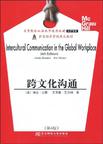跨文化沟通
出版时间:2009-8 出版社:东北财经大学出版社 作者:[美] Linda Beamer, Iris Varner 页数:388
Tag标签:无
内容概要
跨文化管理是现代企业所面临的重要问题之一而跨文化沟通更是重中之重。卓有成效的沟通是跨文化企业管理的出发点。本书为你提供了解读陌生文化的方法,并把对文化的理解与对具体的跨文化沟通问题的分析有机地融合在一起,为读者提供了坚实的理论基础。本书还包含很多作者亲身经历的事例、跨国公司的真实案例以及各种文化价值观、文化偏好在有效的跨文化沟通中的具体应用。
作者简介
琳达·比默(Linda Beamer),美国加利福尼亚大学洛杉矶分校市场营销系教授。2002年,她获得了该大学的杰出教授奖。比默具有丰富的国际教学与咨询经历,曾经在英国、加拿大、中东、阿根廷、中国、日本和新西兰等地担任教师和顾问。
书籍目录
第4版序作者简介前言第1章 文化与沟通 1.1 文化意识的重要性 1.2 理解文化 1.3 对其他文化的反应 1.4 文化变迁的问题 1.5 对陌生文化个体的反应 1.6 沟通与文化 小结 注释第2章 语言在跨文化商务沟通中的作用 2.1 语言障碍与结果 2.2 语言与文化之间的关系 2.3 如何选择正确的语言 2.4 公司通用交际语言 2.5 译员的作用 2.6 与非本族语的人沟通 2.7 技术对口头沟通与书面沟通的影响 小结 注释第3章 了解另一种文化 3.1 提出问题 3.2 范畴1:思考和认知 3.3 范畴2:行动和成就 3.4 范畴3:原则性问题 小结 注释第4章 不同文化间的信息沟通 4.1 沟通模式回顾 4.2 组织常规信息 4.3 组织劝导性信息和论证过程 4.4 组织不受欢迎的信息 4.5 组织解决问题的信息 4.6 语言的作用与影响 4.7 商务信息的渠道 4.8 沟通风格 小结 注释第5章 跨文化沟通中的非言语语言 5.1 副语言 5.2 在面对面沟通中的非言语行为习惯 小结 注释第6章 建立关系的文化准则 6.1 尊重权威与信息结构 6.2 权力距离以及权力与权威的象征 6.3 独断专行与团队和谐 6.4 绩效奖励 6.5 社交在跨文化商务活动中的作用 6.6 跨文化沟通中的伦理因素 小结 注释第7章 跨文化谈判 7.1 谈判要素 7.2 谈判的阶段 小结 注释第8章 跨文化商务沟通中的法律因素与政府因素 8.1 沟通与合法信息 8.2 特定法律体系 8.3 争端解决 8.4 国际企业与国家利益 8.5 劳资沟通中的法律问题与沟通管理 8.6 劳工法规 8.7 营销沟通中的法律问题 8.8 投资态度与财务信息的沟通 小结 注释第9章 企业组织结构和企业文化对跨文化商务沟通的影响 9.1 企业文化与跨文化沟通 9.2 国际化时期 9.3 进出口时期 9.4 跨国公司 9.5 全球企业 9.6 企业组织结构的文化因素对跨国公司沟通的意义 9.7 基于框架组织的沟通 小结 注释第10章 跨国公司内部的跨文化原动力 10.1 DaimlerChrvsler并购案中的文化问题 10.2 跨文化商务沟通是取得成功的战略手段 小结 注释附录 案例1 还有什么地方会出错? 案例2 Hana合资公司
章节摘录
When to communicate is more complex than simply keeping time zones in mind,although that can be complex enough in a worldwide organization. Global busi-ness means having to stay up late in Germany to communicate with Hong Kong orhaving to rise early in Mexico to communicate with Israel. Cellular telephone technology has made it possible for people to reach acrosscontinents and time zones to speak to one another. John in Australia can take aphone call from Aziz in Dubai about the latest news from the Fosters BrewingInternational Ltd. company branch——even when it is 10 p.m. in Sydney and Johnhas just left a concert——ifAziz has his mobile phone number. Worldwide satel-lite transmission of mobile phone messages has increased communication effi-ciency for international firms. It has also extended the workday for employees,eroding the distinction between work time and private time. Future research nodoubt will track the ways cultures view and react to this blurring of work andprivate life. Knowing when to communicate also means choosing the right moment for aparticular message. Can you raise a business issue during lunch with someonefrom another culture? When riding in a hosts car? During a casual moment? Oronly in a formal environment? Often this is related to the question "Who is com-municating?" You may choose a formal moment to discuss sales figures with theexecutive vice president, but an informal moment with the manager of acco-unting. The question of who goes first in negotiation is in part a when question.North Americans often assume that every culture wants to go first and get theirposition out on the table because frequently they do. Teams in Japan or Chinausually want to be last so they can hold back their own position until theyveheard the other side. When to communicate also involves being "on time," something discussed inChapter Three, as well as the issue of a simultaneous versus sequential approachto tasks. If you are expecting exclusive attention from someone whose typicalmethod of operating is to carry on several communication tasks at the same time,you may be disappointed. Someone who expects you to be carrying on simultane-ous tasks may be uncomfortable with exclusive attention.
图书封面
图书标签Tags
无
评论、评分、阅读与下载
用户评论 (总计1条)
- 跨文化管理是现代企业所面临的重要问题之一,而跨文化沟通更是重中之重。卓有成效的沟通是跨文化企业管理的出发点。
《跨文化沟通》提供了解读陌生文化的方法,并把对文化的理解与对具体的跨文化沟通问题的分析有机地融合在一起,为读者提供了坚实的理论基础。还包含很多作者亲身经历的事例、跨国公司的真实案例以及各种文化价值观、文化偏好在有效的跨文化沟通中的具体应用。
琳达·比默(Linda Beamer),美国加利福尼亚大学洛杉矶分校市场营销系教授。2002年,她获得了该大学的杰出教授奖。比默具有丰富的国际教学与咨询经历,曾经在英国、加拿大、中东、阿根廷、中国、日本和新西兰等地担任教师和顾问。
艾里斯·瓦尔纳(Iris Varmer),美国伊利诺伊州立大学商学院国际商务项目部主任,管理学与定量研究方法系教授。瓦尔纳具有广泛的国际经历,她在德国、法国、英国、美国、中国台湾地区等地上过学,新西兰、俄罗斯、法国、比利时、日本、德国到处都有她的课堂。
由在国内环境中成长起来的管理者所控制的总部用一种要人领情的口吻说,“我们知道怎样做才最有利于子公司和整个公司的发展”。事实上,总部也没有认识到利润在促使子公司赢得声望方面所起的作用。日本子公司尤其不能接受自己只是辅助性角色的说法。于是,子公司的管理者产生了一种倾向:把自己看成一个独立的实体,一个什么事都比总部做得更好的独立实体。结果,国内事业部和国际事业部不是同心协力推动公司的发展,而是互相勾心斗角,琢磨采用什么策略才能战胜对方。
这个问题并没有得到改善。事实上,随着更快、更好的沟通技术的出现,这个问题还会变得更加糟糕。由于子公司可以直接同总部或公司其他部门的人联系,因此跳过正式沟通渠道的诱惑非常大。如果首尔子公司的皮埃尔知道中国香港的某位管理者可以在5分钟之内提供解决问题的答案,那么为什么还要浪费时间去同国际事业部沟通呢?有人认为在这种情况下皮埃尔至少应该通知国际事业部。如果皮埃尔采用信件方式与香港地区的管理者沟通,那么发一份复印件给国际事业部只是举手之劳。如果他采用电话或电子邮件方式询问香港地区的管理者,那么他很可能会忘了通知国际事业部,或者认为通知国际事业部这事不重要。不过要知道,皮埃尔可能认为他只是和中国香港方面聊了一会儿,没有什么值得大惊小怪的。因此,他觉得没必要发复印件给公司的有关部门。
在现实情况中,子公司应该同总部层面除国际事业部以外的哪些人进行沟通,这也是一个比较容易混淆的问题。子公司的人一般认识国际事业部的人,而很少接触总部其他部门的人,很多业务依赖国际事业部的支持和帮助。一线人员把信函发给国际事业部,指望着国际事业部的人把信函内容告知需要这些信息并能提供相应信息的人。总部远在天边,所以他们认为任何问题都可以交给总部去处理。
在国际事业部组织形式中,“我们与他们”的观念很典型,这种观念对组织的沟通氛围非常有害。国内事业部的人可能会显示出优越感,不把总部方面的新进展通知国际事业部和子公司。然而,经营业绩突出的国际事业部内部也可能产生优越感,从而导致组织的沟通功能紊乱。今天,在许多国家的大企业中,国际业务创造的收益占公司总收益的比重越来越高,这可能会导致国内事业部和国际事业部争风吃醋,形成敌对和竞争状态,进而导致一系列沟通问题,并造成资源的浪费。一个小集团可能拒绝向另一个小集团提供信息.出于小集团的利益却损害了整个公司的盈利能力。
